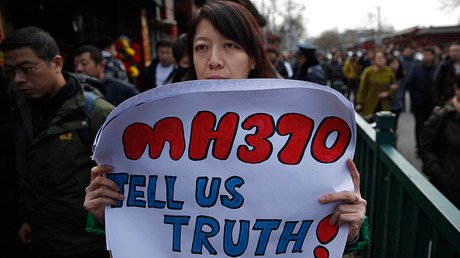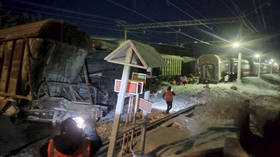Fleet of deepwater drones may hunt for long-missing MH370 jet

An American company has offered its fleet of underwater drones to the Malaysia government in the search for the Malaysia Airlines jet, MH370. The jet went missing near Australia three years ago with 239 people on board.
Ocean Infinity’s six autonomous underwater vehicles (AUV), or drones, are capable of operating at 6,000 meters under water to collect high resolution data. The company advertises them as offering “seabed intelligence,” and equipped with sonar equipment and capable of search “huge swathes of the seabed, quickly and with outstanding accuracy.”
"The terms of the offer are confidential, but I can ... confirm that Ocean Infinity have offered to take on the economic risk of a renewed search," the company said in an email to AP.
"We're in a constructive dialogue with the relevant authorities and are hopeful that the offer will be accepted," it added.
The drones are connected to surface vehicles for positioning and communication.
Ocean Infinity’s offer comes after victims’ families have been urging the government to agree to a private sector hunt for the wreckage.
The Malaysia Airlines flight, carrying 239 passengers and crew, mysteriously disappeared on its way from Kuala Lumpur to Beijing on March 8, 2014. The subsequent search by Malaysia, Australia and China of a 46,000 square-mile area of remote seabed in the southern Indian Ocean cost about A$200 million ($150 million) and was extended twice with few clues offered. They failed to find any trace of the Boeing 777.
A total of 33 pieces suspected to be from the plane have been found so far, including parts of the wings and tail, in places as far afield as Reunion, Mozambique, South Africa, Mauritius and Tanzania.
After 3yrs of fruitless search for #MH370 families to raise money to hunt for the jet themselves https://t.co/yp5haKyXAzpic.twitter.com/Ub74l81ou7
— RT (@RT_com) March 6, 2017
"Why hasn't Malaysia accepted this win-win offer?" Voice370 asked in a statement.
An international board of experts concluded the flight most likely crashed in a 9,700-square-mile area of ocean on the northern boundary of the last search zone, far southwest of Australia.
Malaysia, Australia and China agree that the newly identified area is too big to justify resuming the publicly funded search.













